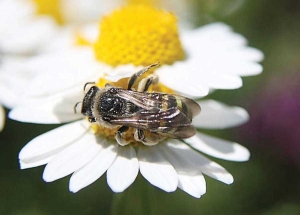 |
| (Courtesy Doug Walsh) |
However, summer losses (27 percent) exceeded winter losses for the first time. Total losses for the year were 42 percent, up from 34 percent the previous year, according to a survey conducted by the Bee Informed Partnership, the USDA, and the Apiary Inspectors of America. About two-thirds of 6,100 beekeepers who responded to the survey reported losses beyond economically acceptable levels. Those beekeepers managed almost 400,000 colonies across the country.
Dennis vanEngelsdorp, entomologist at the University of Maryland and project director for the Bee Informed Partnership, said winter losses used to be thought of as the most important indicator of bee colony health, but commercial beekeepers are now losing more colonies in summer than in winter. “Years ago, this was unheard of,” he said. Jeff Pettis, a co-author of the survey and senior entomologist at the USDA’s Bee Research Laboratory in Beltsville, Maryland, said such high summer and year-round losses are very troubling. “If beekeepers are going to meet the growing demand for pollination services, researchers need to find better answers to the host of stresses that lead to both winter and summer colony losses,” he said.
Source: http://www.goodfruit.com
No hay comentarios:
Publicar un comentario